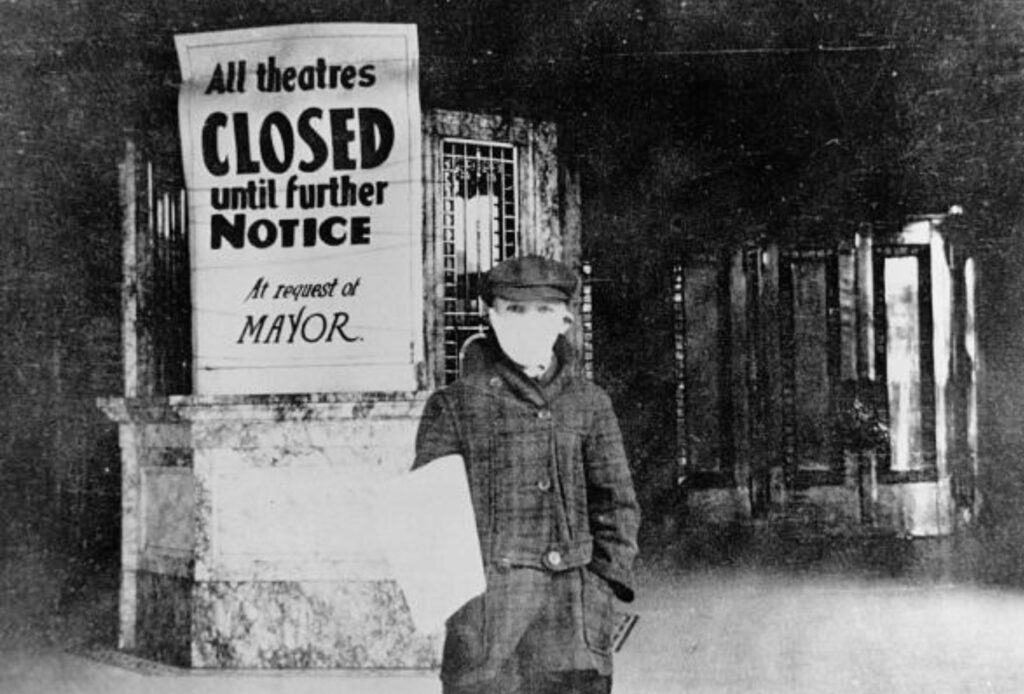Pandemics in Toronto
By Bruce Bell, Toronto Historian
I was hopeful when I read recently that producer David Mirvish had sent letters to ticket holders saying that the smash musical, “Hamilton” will return, optimistically within 18 months. Coupled with the arrival of a promising vaccine, we wait patiently for that day to arrive. However, as we are now experiencing, not only are theatres closed, but so is just about everything else that at one time we took for granted. Yet this present pandemic crisis isn’t the first or even the second plague to hit the same streets we walk today.
The first pandemic Toronto was to endure began with a fateful entry in James Lesslie’s journal in June of 1832. Mr. Lesslie was a druggist, stationary store owner and in later years an Alderman. He writes…
“The steamship The Great Britain arrives with 600 passengers on board. 2 new cases of Cholera reported in Town today and the wife of the person who died 2 days ago it is said was seized with cholera and died shortly after being taken to the Hospital…………….. “
The pandemic began in India in 1831 and gradually moved into Europe before being brought westward with the great tides of emigration. We now know that Cholera is spread mostly by unsafe water and unsafe food that has been contaminated with human waste containing the bacteria. Back then very little was known about how the disease was spread, and weird ways of preventing it began to appear. One was the burning of tar and pitch (resin) in barrels outside each dwelling.
Interestingly, what few theatres and taverns we had back then, did remain open, as did stores and markets.
By the time the Cholera pandemic had finally left the Town of York in September that same year, 205 reported deaths had occurred in a town of 6000. In today’s numbers, that would be 150,000 people dead in 4 months.
I don’t know how theatre in general will survive this present crisis, but looking into our past to the 1918 Spanish Flu, can give us a few hopeful clues. Cawthra Mulock born to one of Toronto’s wealthiest families, is best known for building the still standing Royal Alexandra Theatre on King Street in 1907. When the Spanish Flu finally came to an end, it killed approximately 50 to 100 million people worldwide. Across Canada, some 50,000 people died, and more than 1,750 Torontonians were dead. Put this into today’s perspective, imagine a flu killing 150,000 Torontonians and across Canada, 500,000, and up to a half-billion dying worldwide.
The Royal Alex had just finished ten successful seasons when the Spanish Flu, the most deadly pandemic ever recorded in history, reached Toronto on September 29, 1918. Even though it is believed the flu started in Kansas, USA in an army camp, the first case was reported in Spain in March 1918, and when the King of Spain got sick, the name Spanish Flu started to be used.
On October 19, 1918, during the 2nd and much deadlier wave of the Spanish Flu, Toronto closed all places of amusement for the foreseeable future.
Theatres in every city in Canada and the United States shut their doors; however, the only exceptions were the theatres in New York City, which remained open.
Conversely, fear of infection left many theatres empty, so those Broadway theatres closed their doors due to a lack of customers. Productions that were touring were immediately shut down, with thousands of actors stranded across the continent, and many others dying of the flu.
For two weeks the Toronto Royal Alexandra remained dark while the disease raged. The Royal Alex reopened on November 4, 1918, just in time for the November 11 Armistice marking the end of the Great War (WW1.) Sadly, while on a business trip to New York City, Cawthra Mulock the builder and owner of the Royal Alex died of the Spanish Flu on December 1, 1918 at the age of 36, and is buried here in Toronto in St James’ Cemetery. Even though the city began to reopen, a massive financial depression descended upon Toronto and it took another two years before the economy started to recover.
Another wave of the Spanish Flu took place in the spring of 1919, and yet another in April of 1920 before finally it was declared over in December of 1920. The Pandemic had finally disappeared and just in time for the biggest, fastest and most profitable party in our city’s history, the Roaring 20’s had arrived!
Noted Toronto historian, Bruce Bell specializes in in-depth private walking tours of Old Toronto. Email: [email protected] Call: 647.393.8687
